Reetik Sahu
Long-Term Missing Value Imputation for Time Series Data Using Deep Neural Networks
Feb 25, 2022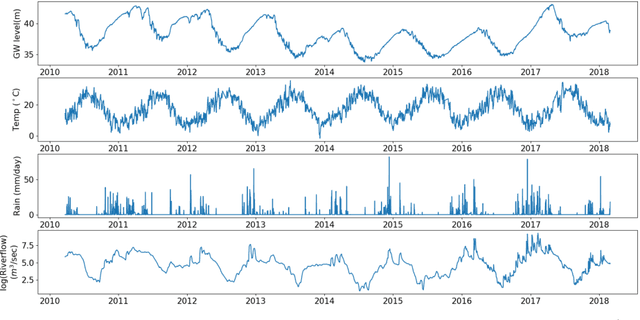

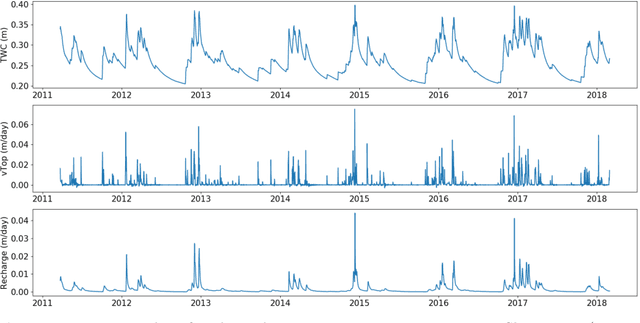
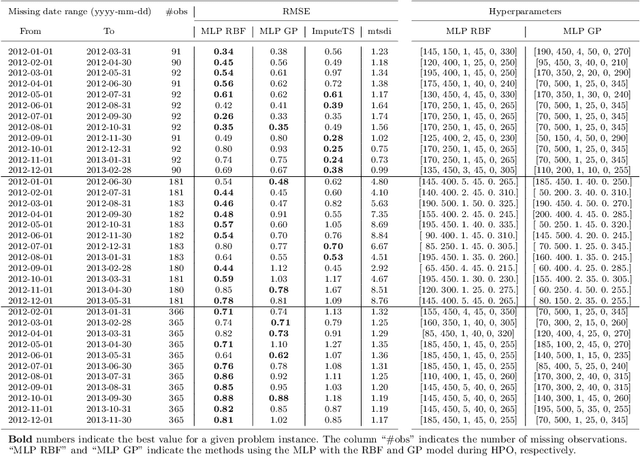
Abstract:We present an approach that uses a deep learning model, in particular, a MultiLayer Perceptron (MLP), for estimating the missing values of a variable in multivariate time series data. We focus on filling a long continuous gap (e.g., multiple months of missing daily observations) rather than on individual randomly missing observations. Our proposed gap filling algorithm uses an automated method for determining the optimal MLP model architecture, thus allowing for optimal prediction performance for the given time series. We tested our approach by filling gaps of various lengths (three months to three years) in three environmental datasets with different time series characteristics, namely daily groundwater levels, daily soil moisture, and hourly Net Ecosystem Exchange. We compared the accuracy of the gap-filled values obtained with our approach to the widely-used R-based time series gap filling methods ImputeTS and mtsdi. The results indicate that using an MLP for filling a large gap leads to better results, especially when the data behave nonlinearly. Thus, our approach enables the use of datasets that have a large gap in one variable, which is common in many long-term environmental monitoring observations.
Surrogate Optimization of Deep Neural Networks for Groundwater Predictions
Aug 30, 2019
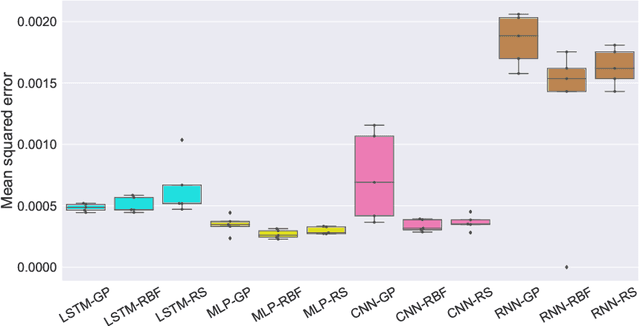
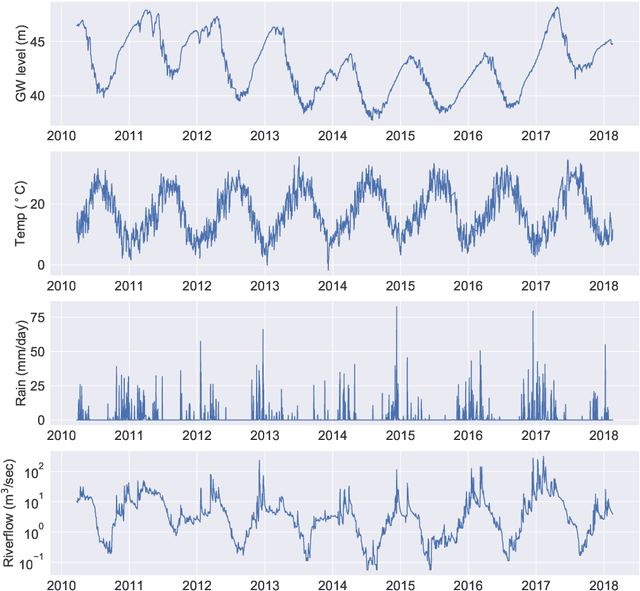
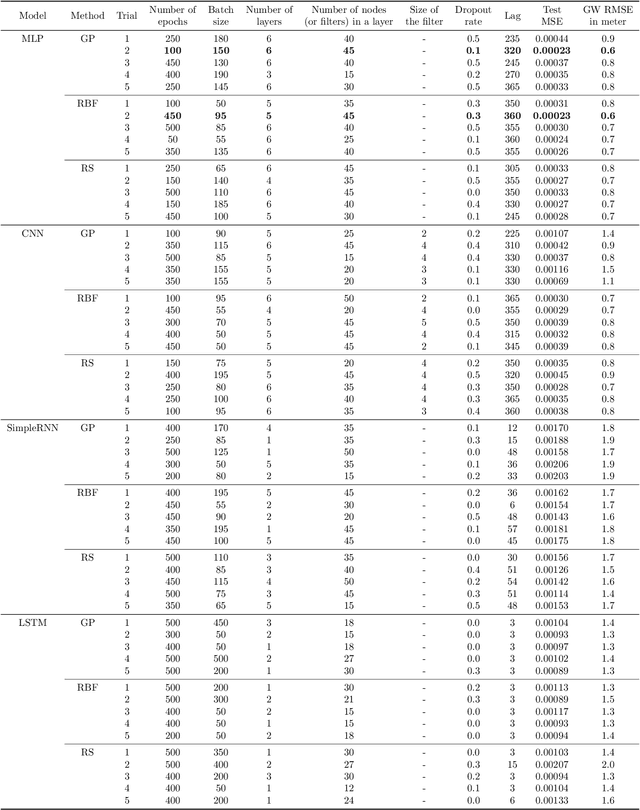
Abstract:Sustainable management of groundwater resources under changing climatic conditions require an application of reliable and accurate predictions of groundwater levels. Mechanistic multi-scale, multi-physics simulation models are often too hard to use for this purpose, especially for groundwater managers who do not have access to the complex compute resources and data. Therefore, we analyzed the applicability and performance of four modern deep learning computational models for predictions of groundwater levels. We compare three methods for optimizing the models' hyperparameters, including two surrogate model-based algorithms and a random sampling method. The models were tested using predictions of the groundwater level in Butte County, California, USA, taking into account the temporal variability of streamflow, precipitation, and ambient temperature. Our numerical study shows that the optimization of the hyperparameters can lead to reasonably accurate performance of all models, but the "simplest" network, namely a multilayer perceptron (MLP) performs overall better for learning and predicting groundwater data than the more advanced long short-term memory or convolutional neural networks in terms of prediction accuracy and time-to-solution, making the MLP a suitable candidate for groundwater prediction.
 Add to Chrome
Add to Chrome Add to Firefox
Add to Firefox Add to Edge
Add to Edge